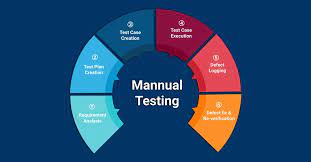
In today’s world, where automation tools and techniques dominate software QA testing, the timeless art of manual software testing remains an indispensable pillar of the software development lifecycle. While automation has undoubtedly improved efficiency and expedited certain testing processes, manual testing is far from obsolete.
The Necessity of Manual Software Testing:
- Human Intelligence and Creativity
One of the fundamental strengths of manual testing lies in the cognitive abilities of human testers. While automated testing tools excel at executing predefined test cases, they lack the capacity for creativity and intuition. Testers can think critically, identify potential issues, and adapt their approach based on their observations, making them invaluable in exploring uncharted territories of the software.
- User-Centric Evaluation
User experience (UX) is a paramount concern in software development. While automated tests can check for functional correctness, they often fall short in evaluating the software from a user’s perspective. Manual testing allows testers to simulate real user interactions and assess the software’s usability, accessibility and overall user satisfaction.
- Exploratory Testing
Exploratory testing is a highly creative and adaptable approach to testing, where testers explore the software without predefined test cases. This method allows testers to uncover unexpected issues, assess the software’s adaptability to varying conditions and identify potential vulnerabilities.
- Complex and Niche Scenarios
Not all software scenarios can be easily automated. In cases where the software interacts with intricate external systems, specialized hardware or complex real-world environments, manual testing becomes indispensable.
- Early-Stage Testing
Manual testing can commence in the early stages of development, even before a graphical user interface (GUI) is fully developed. Testers can validate APIs, integration points, and underlying algorithms. This early validation helps catch issues at their inception, reducing the cost and effort required for later-stage bug fixes.
The Advantages of Manual Software Testing
While the necessity of manual testing is apparent, it’s also essential to recognize the distinct advantages it brings to the software development process:
- Flexibility and Adaptability: Manual testers can quickly adapt to changing requirements and evolving project scopes. They can accommodate last-minute changes and prioritize testing efforts based on the most critical aspects of the software. This flexibility is especially valuable in agile development environments.
- Cost-Effective for Small Projects: For smaller projects with limited budgets and timeframes, investing in elaborate automated testing infrastructure may not be feasible. Manual testing provides a cost-effective alternative that ensures a reasonable level of quality.
- Real-World Simulation: In many cases, manual testers can closely replicate real-world scenarios, ensuring that the software behaves as expected in practical and user-driven environments.
- Non-Functional Testing: Manual testing is particularly effective for non-functional testing such as performance, security and usability testing, where human judgment and creativity play a crucial role in identifying vulnerabilities and bottlenecks.
The Synergy of Manual and Automated Testing
Rather than seeing manual and automated testing as competing approaches, it’s advantageous to view them as complementary elements of a comprehensive testing strategy. By combining both methodologies, software development teams can harness the strengths of each to ensure a high-quality end product.
- Test Case Design and Maintenance
Manual testing often informs the creation of test cases for automation. Testers can identify critical scenarios, edge cases and boundary conditions that need automation. Once automated, these test cases can be executed repeatedly, freeing up manual testers to explore new dimensions of the software.
- Regression Testing
Automated tests excel at regression testing, swiftly verifying that new code changes do not introduce previously resolved defects. Manual testers can then focus on exploratory testing and user-centric evaluations.
- Test Data Generation
Manual testers can contribute to the generation of test data, which is essential for both manual and automated testing. Accurate and diverse test data sets are crucial for comprehensive testing coverage.
Partner with a Software QA Testing Service Provider in India that Understands the Manual Testing.
It is beyond dispute that manual software testing is important. However, very few companies possess the knowledge or resources to independently test their software solutions. This is where OrangeMantra steps in to provide assistance.
OrangeMantra: A Trusted QA Software Testing Partner
As a leading software testing company in India, we employ a streamlined process to test software solutions, aiming to produce the best results. We offer the following QA and software testing services:
- Manual Testing
- Automation Testing
- Functional Testing
- Mobile Testing
- QA Outsourcing
- Performance Testing
Wrapping Things Up……….
In the dynamic world of software development, the role of manual testing remains steadfast, guarding against critical defects, ensuring a superior user experience, and adapting to the ever-evolving needs of software projects. Manual software testing helps guarantee 100% error-free software for efficient and secure business operations.
When it comes to manual software testing, finding the right partner is half the job. OrangeMantra serves as a dependable partner, assisting you in manual testing to ensure flawless software solutions.






